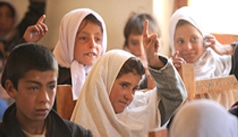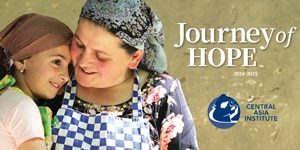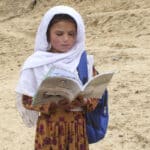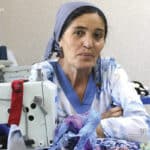What’s cooking in Afghanistan? One woman’s struggle to work
With more than 60 percent of its population currently under the age of 25, Afghanistan is on the verge of a crisis. Millions of young people are preparing to enter the workforce in the next decade. Yet, training opportunities that would prepare them for this important transition are almost nonexistent. The question is, will they be ready when the time comes? The United Nations and development organizations around the world want to make sure that they are.
Today is International Day of the Girl Child and this year’s theme is A Skilled GirlForce. Championed by the United Nations, the day marks the beginning of a year-long effort to help women successfully enter the workforce.
Central Asia Institute will be a part of that effort. Although CAI’s in-country partners have offered vocational training since 1999, the need for programs like this continues to grow and we welcome the chance to focus on this important initiative.
AFGHANISTAN’S UNEMPLOYMENT CRISIS
Although the demand for vocational and livelihood training is high in all three of the countries we serve, it is especially significant in Afghanistan.
In Afghanistan the unemployment rate for young men and women, age 15-24, is as high as 31 percent. That number skyrockets to a whopping 42 percent if you include youth not receiving an education or skills training. Women, often forbidden to work outside of the home, are particularly disadvantaged when it comes to employability. Only 20 percent of the female population (age 15-64) is employed, and of that 20 percent many women are only able to secure informal or low-paying jobs.
But the situation is not all bad. Some women are defying the odds and carving out a niche for themselves in the workforce. Khoshbo is one such woman.
Khoshbo is a young woman who lives in northern Afghanistan. She recently graduated from a vocational training program sponsored by CAI. The course was designed to provide women with marketable skills, allowing students to work from their home or sell their wares at the market to earn a small income for their families. During the course of the six-week program, Khoshbo and her 19 classmates learned to make a variety of foods – everything from traditional Afghan rice dishes to pizza and cakes.

Khoshbo’s students show visitors their cake decorating skills.
“To be honest after finishing this program my life totally changed,” said Khoshbo. “Now I can cook a variety dishes at home and supply it to the local market to have some income in order to overcome our daily expenses and to be an independent person.”
After graduating from the program and realizing the value of her newfound skills, Khoshbo decided that she wanted to help other women obtain the same skills she had acquired. She applied to be a trainer at the vocational training center where she had studied and was accepted.
Now she teaches two cooking classes a day, one in the morning and one in the afternoon. The classes run six days a week, and she makes a livable wage. She spends only 10-20 percent of her salary (150,000 Afghanis, which is approximately $1,900 USD), on herself. The rest goes to support her family.

Food prepared by Khoshbo’s class
“In a country like Afghanistan there is no job for the youth, especially for the women…Now I’m not among the jobless youths because I have the cooking skills, and I’m very happy with the decision I had chosen.”
She hopes other women will make the same choice to pursue a trade and find a job.
“My message to all my sisters and mother is that please look at me and my colleagues who are working hard in this vocational training classes. Besides the education they must get some vocation training as well in order to be able to have products to sell to get income and serve the people of Afghanistan.”
She pleaded with CAI donors to make this choice possible.
“This is the first time the women are served with such a unique and basic program that is really helpful for the women of Badakhshan. Therefore, we are deeply thankful for CAI and its partner Marcopolo Organization for empowering the women through their vocational training program. My message to the honorable donors is not to stop their vocational training program, especially the cooking section of this program, and to expand this service to all Badakhshan provinces.”












4 responses to “What’s cooking in Afghanistan? One woman’s struggle to work”
Inwould.love to come and help. I can trach the ladies to make lotions soaps shampoos organic cleaning supplies,aa well as teach mecican cooking classes
I would love to help the ladies write and publish a cookbook. All could be done electronically.
Thank you for the kind offer Paula. That would certainly include some delicious recipes.
All the best,
Hannah
@ Paula and Hannah:I would purchase that cookbook!